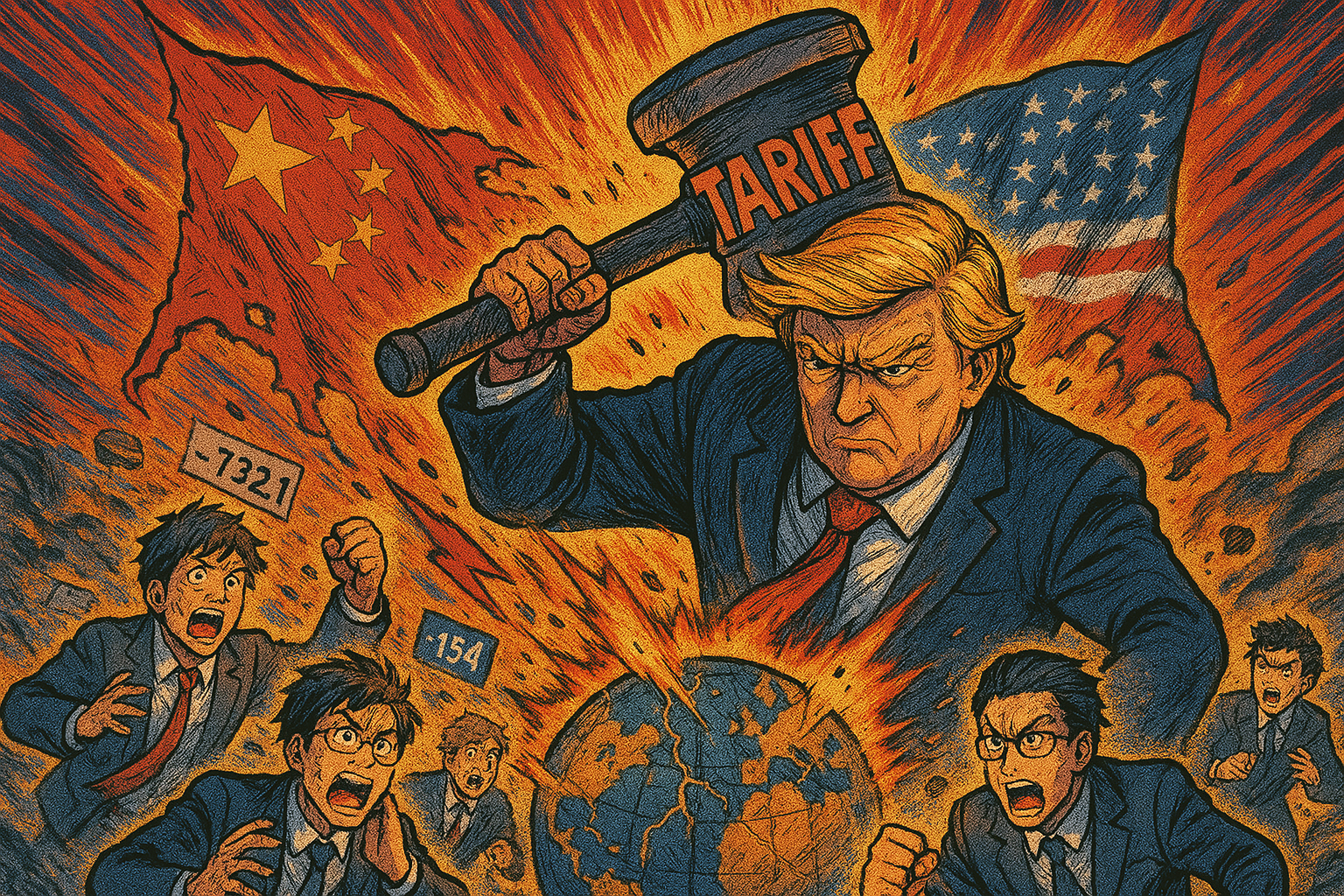The global economy is in turmoil following U.S. President Donald Trump’s unexpected tariff shifts, announced in early April 2025. These sweeping changes, which include a temporary pause on tariffs for many countries except China, have sent shockwaves through financial markets, disrupted supply chains, and raised fears of a looming trade war. For investors, businesses, and consumers alike, the uncertainty surrounding Trump tariff shifts signals a volatile road ahead. This article explores the origins of these policies, their immediate impacts, and what they mean for the global economic landscape.
The Genesis of Trump’s Tariff Strategy
Donald Trump’s return to the White House in January 2025 brought with it a renewed focus on protectionist trade policies, a hallmark of his first term. On April 2, 2025, Trump declared a national emergency under the International Emergency Economic Powers Act, citing persistent U.S. trade deficits as a threat to national and economic security. Initially, he imposed a blanket 10% tariff on all imports, effective April 5, with higher rates—up to 50%—targeted at 57 countries with significant trade surpluses with the U.S. China faced the steepest hike, with tariffs reaching 104% by April 9.
However, in a dramatic reversal on April 9, Trump announced a 90-day reduction of tariffs to 10% for most countries, sparing allies like Canada, Mexico, and the European Union from harsher duties. China, however, saw its tariffs escalate to 125%, intensifying tensions with the world’s second-largest economy. These Trump tariff shifts reflect a strategy of leveraging trade policy to pressure trading partners into concessions while isolating China as a primary target.
Market Meltdown: Immediate Economic Fallout
The announcement of Trump tariff shifts triggered unprecedented volatility in global financial markets. Between April 3 and April 7, the S&P 500 plummeted, losing nearly $6.6 trillion in value over two days—a record-breaking decline. The tech-heavy Nasdaq dropped 6%, and the Dow Jones Industrial Average shed 4%, marking their worst single-day losses since the 2020 pandemic. Companies reliant on global supply chains, such as Apple (-9%) and Nike (-14%), bore the brunt of the sell-off.
Gold, typically a safe-haven asset, surged to a record $3,167 per ounce before dipping to $2,984 as investors grappled with uncertainty. Oil prices, reflecting fears of reduced demand, fell below $57 per barrel, their lowest since 2021. The U.S. dollar weakened against the euro and yen, while China’s yuan hit a 19-month low, caught in the crossfire of escalating U.S.-China trade tensions.
The brief market recovery on April 9, following Trump’s tariff pause for most countries, saw Japan’s Nikkei surge 9%. Yet, analysts warn that this relief may be short-lived, as the specter of retaliatory tariffs and prolonged uncertainty looms large.
Global Reactions: From Retaliation to Negotiation
The Trump tariff shifts have elicited a spectrum of responses from U.S. trading partners. China swiftly imposed 34% counter-tariffs on U.S. goods and restricted exports of rare earth minerals, critical for tech and defense industries. The European Union, facing a 20% tariff before the pause, condemned the measures but signaled openness to negotiations. EU Commission President Ursula von der Leyen emphasized avoiding a full-scale trade war, while Italy’s Prime Minister warned of severe impacts on its agri-food exports.
Japan, reeling from what Prime Minister Shigeru Ishiba called a “national crisis,” saw its banking sector hammered before the tariff pause eased pressures. Canada and Mexico, initially spared additional duties, are navigating delicate talks to maintain favorable trade terms under the USMCA. Smaller economies, like Vietnam (facing a 46% tariff) and Madagascar (47%), fear devastating economic contractions, particularly in export-driven sectors like textiles.
Turkey, hit with a 10% tariff, announced plans to deepen free-trade efforts with the U.S., focusing on textiles and machinery. Meanwhile, African nations reliant on the African Growth and Opportunity Act face uncertainty, as Trump tariff shifts threaten to reverse decades of trade gains.
Economic Implications: Winners, Losers, and Unknowns
The Trump tariff shifts promise far-reaching consequences, though their full impact remains uncertain. Proponents argue that the tariffs will boost U.S. manufacturing by incentivizing domestic production and reducing reliance on imports. Vice President JD Vance has framed the policy as a long-term investment in national security, particularly in critical industries like steel and pharmaceuticals.
Critics, however, warn of dire outcomes. Economists estimate that the tariffs could reduce U.S. after-tax income by 1.3%, translating to an average tax hike of $1,300 per household in 2025. Consumers are already bracing for higher prices, with imported goods like electronics, clothing, and groceries expected to rise sharply. The auto industry faces particular strain, with Nissan halting production of two Mexico-built models due to 25% tariffs on imported vehicles.
Globally, the tariffs risk fracturing supply chains and slowing economic growth. JPMorgan has raised its global recession probability to 60%, citing disruptions to trade and investment. Small and medium-sized enterprises, especially in developing nations, may struggle to absorb higher costs, while multinational corporations could shift production to tariff-exempt countries, reshaping global trade flows.
Political and Social Dimensions
The Trump tariff shifts are not just economic—they’re deeply political. Trump’s base views the tariffs as a fulfillment of his “America First” campaign promises, aimed at reviving industrial heartlands. However, dissent within the Republican Party is growing. Senators like Ted Cruz and Rand Paul have expressed concerns about consumer costs and long-term economic damage, while GOP megadonors like Ken Langone warn of market collapse risks.
Public sentiment is mixed. A recent CBS survey found that only 36% of Americans believe Trump prioritizes the economy over tariffs, with 60% viewing the economy as “bad.” As prices rise, voter backlash could erode Trump’s political capital, especially if short-term pain overshadows promised long-term gains.
Looking Ahead: Navigating the Trade Storm
The Trump tariff shifts have thrust the global economy into uncharted territory. While the 90-day tariff pause offers temporary relief for many countries, the escalation against China signals a protracted trade conflict with no clear resolution. Negotiations will be critical, but Trump’s unpredictable approach—described by critics as “burn-it-down-first” policymaking—complicates efforts to stabilize markets.
For businesses, adapting to Trump tariff shifts means rethinking supply chains, hedging against currency fluctuations, and preparing for higher costs. Consumers may need to tighten budgets as inflation creeps into everyday purchases. Investors, meanwhile, face a balancing act between safe-haven assets and opportunities in sectors less exposed to trade disruptions.
As the world watches, the question remains: Can Trump’s gamble reshape global trade in America’s favor, or will it ignite a trade war that leaves no winners? For now, the Trump tariff shifts are a high-stakes experiment, with the global economy hanging in the balance.
References
CBS News. (2025). Public Opinion on Trump’s Economic Policies: A National Survey. CBSNews.com.
Bloomberg News. (2025). U.S. Tariff Announcements and Market Reactions. Bloomberg.com.
The Wall Street Journal. (2025). Trump’s Trade Policies: Economic Impacts and Global Responses. WSJ.com.
Reuters. (2025). China’s Counter-Tariffs and Rare Earth Export Restrictions. Reuters.com.
Financial Times. (2025). Global Supply Chain Disruptions Amid U.S. Tariff Shifts. FT.com.






Leave a Reply